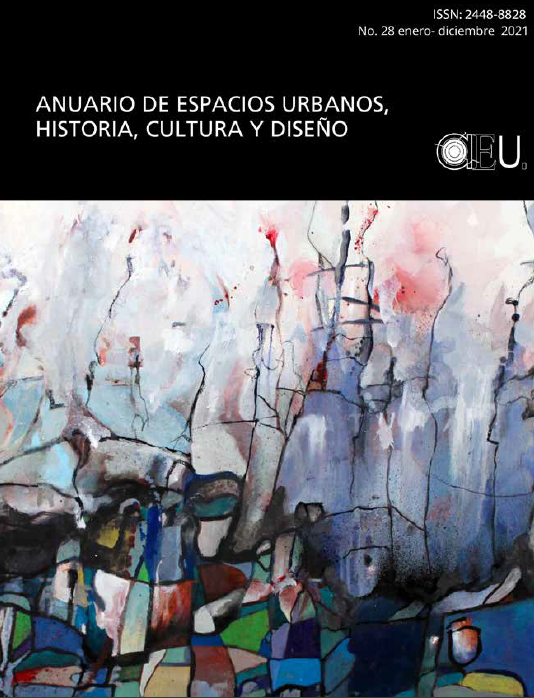No. 28 (2021): Anuario de Espacios Urbanos, Historia, Cultura y Diseño




ANUARIO DE ESTUDIOS URBANOS, HISTORIA, CULTURA Y DISEÑO, no. 28, February-December, 2021. It is an annual electronic publication edited by the Universidad Autónoma Metropolitana. with postal address at Av. San Pablo No. 180 Col. Reynosa Tamaulipas C.P. 02200, Azcapotzalco City Hall, CDMX Tel: (52) 55-5318-9000. Certificate of Reservation of Rights to the Exclusive Use of Title No. 04-217-031609463400-203, printed ISSN: 1665-1391, ISSN: 2448-8828, both granted by the National Institute of Copyright. Responsible for the last update of this issue: María Esther Sánchez Martínez, Department of Evaluation of Design over Time, Division of Sciences and Arts for Design. Date of last modification December 30, 2021. File size 5.70 MB.
The content of the published articles is the responsibility of each author and does not necessarily reflect the position of the editor of the publication. Any partial or total reproduction of the contents or images of the publication is authorized, including electronic storage, as long as it is non-profit or for strictly academic uses, invariably citing the source without altering the content and giving authorial credits.
This work is licensed under a Creative Commons Attribution-Noncommercial-ShareAlike 4.0 International License.
Magazine in LATINDEX Directory and MIAR Database
